Everything you need to know about Swayambhunath Stupa, better known as Kathmandu’s Monkey Temple.
Swayambhunath Stupa
An important pilgrimage site for Buddhists and Hindus, the Swayambhunath Temple in Kathmandu, often called the ‘Monkey Temple’ sees its fair share of tourists, being easily accessible from the city.
I made my way up there on my very first afternoon in Kathmandu. I set off on foot, map in hand but was lost in less than fifteen minutes.
Let’s just say that sometimes I am directionally challenged, more so after sleepless nights on flights. I stopped two school girls walking home and asked for directions in English.
With curious eyes one of them greeted me with, “You beautiful”. Soon enough, I was walking with them, talking to them in Hindi which they understood well thanks to Hindi movies being very popular in Kathmandu.
The older girl Geeta offered to guide me all the way and was nice enough to refuse money in return saying that she was raised to believe that it was important to help foreign guests.
When I insisted, she accepted the few hundred Nepali rupees with a shy smile. After half an hour of hiking uphill and talking about our very different lives and homes, we reached the foot of the Eastern Stairway where Geeta said goodbye.
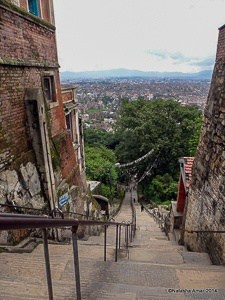
The exhausting hike to the hilltop where the Buddhist temple, a UNESCO World Heritage Site is located was made interesting by the hissing macaques perched along the staircase, their eyes firmly focused onto passersby as they sprung forth to snatch food and drinks from their hands, shocking them with their swiftness.
Groups of teenagers stood at various spots on the steps, singing or playing the guitar, collecting donations from visitors for various causes.
Fortune tellers and souvenir sellers sat or squatted all along the way, calling out to me as I stopped to catch my breath.
The temple is a picturesque example of the interwoven fabric of Buddhism and Hinduism. The Stupa is a magnificent white structure with a gilded spire on which are painted the bright captivating eyes of the Buddha.
The nose is the Nepali number ek for one believed to signify unity and the third eye signifies the wise insight of the Buddha.
The white dome represents the earth and the 13 tiered structure signifies the stages that humans must experience to achieve nirvana.
Pilgrims circumnavigated around the Stupa, spinning the prayer wheels around its base, sometimes offering prostrations as they chanted Om Mani Padme Hum (‘hail to the jewel in the lotus’).
All around were colorful Buddhist prayer flags fluttering in the breeze, believed to be carried to the heavens by the winds.
Around the stupa and in the compound, are many smaller religious structures, temples and idols of various deities such as the Hindu goddess of smallpox Hariti and river goddesses Jamuna and Ganga, among many others.
Especially striking was a black statue of Dipankara or the ‘Buddha of Light’ believed to have achieved the highest stage of enlightenment before Gautama, carved in the 7th century.
The air was thick with the pleasant smell of incense and butter lamps, the chants of devotees and the devotional music played by stores selling prayer beads, rosaries, audio CDs, books and incense.
The macaques pranced around the compound, scouring for food and often brawling over it. There was something special about the energy of the place, perhaps rendered stronger by its location high above the city and the hilltop views made for a remarkable sunset experience.
These were the kind of experiences I was seeking in Nepal’s Kathmandu Valley and on its very first day, the city had not disappointed.

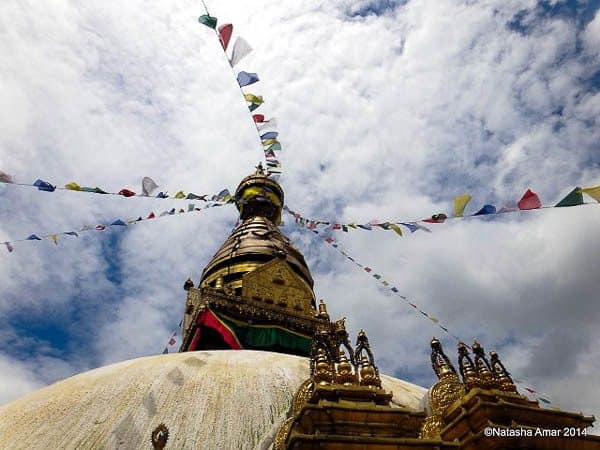
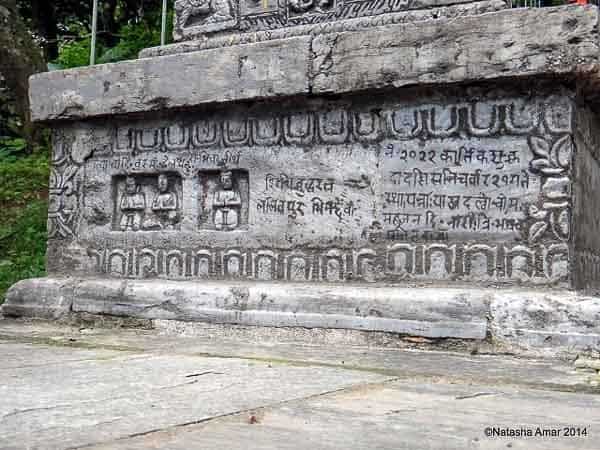
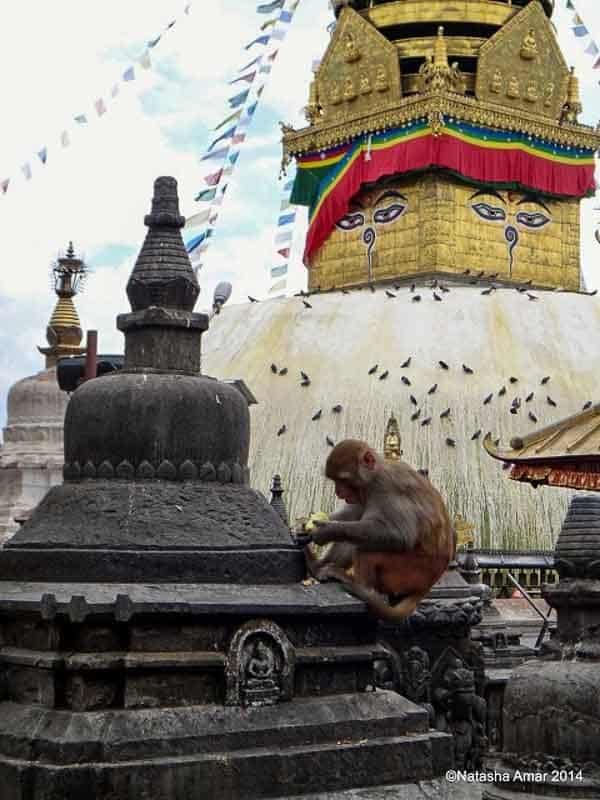
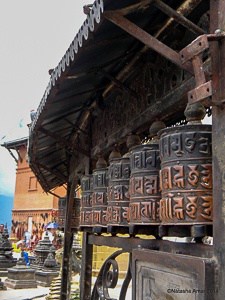
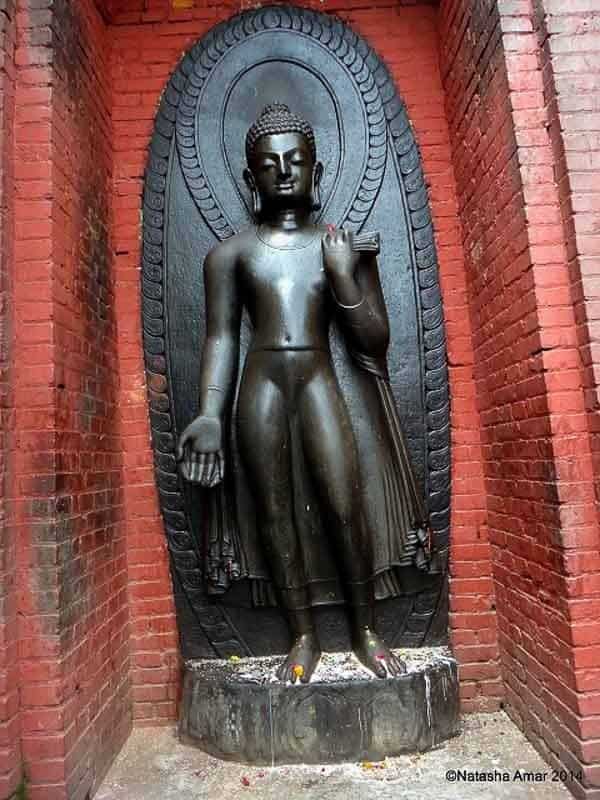
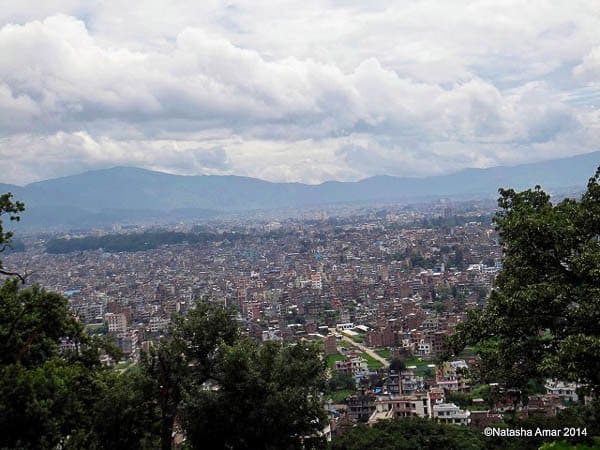

2 thoughts on “Swayambhunath Stupa: Kathmandu’s ‘Monkey Temple’”
Great read thanks for posting this!
I will be Nepal in 3 weeks, this sounds like just the kind of place I’d like to visit on my first day or so! 🙂
Enjoy your trip to Nepal! Let us know what you think of Swayambhunath Stupa 🙂